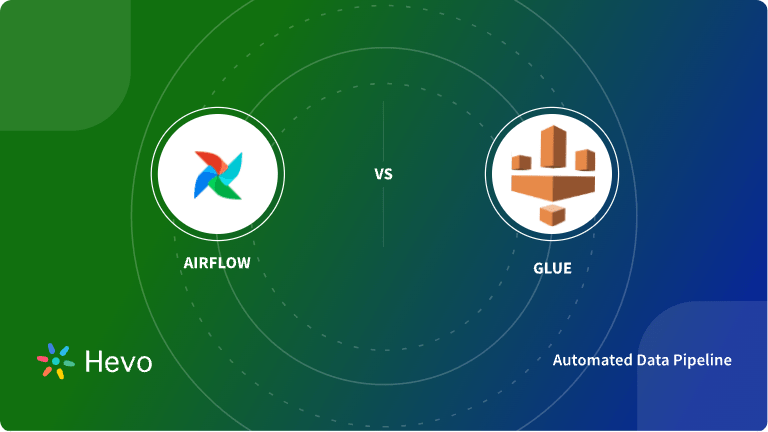In the modern, data-driven world, efficient workflow automation and data pipeline orchestration are crucial for any organization connected to complicated data systems. Whether a data engineer, IT professional, or decision-maker is tasked with choosing the right toolset for a data infrastructure, one needs to understand the strengths and weaknesses of various available platforms.
The two popular tools available in the market are Apache NiFi vs Airflow. Both tools are excellent solutions for managing data workflows but differ in purpose and excel at different scenarios.
This blog will provide a comprehensive comparison of Airflow vs NiFi so that you can choose which tool fits your business needs. So let’s get started!
Table of Contents
What is Apache Airflow?

Apache Airflow is an open-source platform for authoring, scheduling, and monitoring workflows through programming. No matter how complex, almost any workflow can be implemented using Python code within Apache Airflow.
Key Features
- Business Operations: Apache Airflow’s tool agonist and extensible quality make it a preferred solution for many business operations.
- ETL/ELT: Airflow allows you to schedule your DAGs in a data-driven way. It also uses Path API, simplifying interaction with storage systems such as Amazon S3, Google Cloud Storage, and Azure Blob Storage.
- Infrastructure Management: Setup/teardown tasks are a particular type of task that can be used to manage the infrastructure needed to run other tasks.
- MLOps: Airflow has built-in features that include simple features like automatic retries, complex dependencies, and branching logic, as well as the option to make pipelines dynamic.
Rest assured, Hevo’s no-code platform helps streamline your ETL process. Try Hevo and equip your team to:
- Integrate data from 150+ sources(60+ free sources).
- Transform and map data easily with drag-and-drop features.
- Easily migrate different data types like CSV, JSON, etc., with the auto-mapping feature.
Join 2000+ happy customers like Whatfix and Thoughtspot, who’ve streamlined their data operations. See why Hevo is the #1 choice for building modern data stacks.
Get Started with Hevo for FreeWhat is Apache NiFi?

Apache NiFi automates the flow of data between systems. It is a powerful open-source tool focusing on data flow automation, ensuring secure and efficient data transfer. It’s design is based on the flow-based programming model.
Key Features:
- Data provenance tracking: It provides a complete lineage of information from beginning to end.
- Data Ingestion: NiFi can collect data from various sources, including log files, sensors, and applications. It can ingest data in real-time or in batches.
- Data Enrichment: NiFi enriches data by adding additional information, such as timestamps, geolocation data, or user IDs. This improves data quality and makes it analysis-ready.
- Data Transformation: You can transform data by changing its format, structure, or content. This may help make the data more interoperable between different and dissimilar systems or further enhance performance in data analysis.
- Data Routing: NiFi allows routing to various destinations, including Hadoop, Hive, and Spark. These may be helpful when distributing data through multiple systems or other data analysis uses.
Read our in-depth comparison of Apache NiFi vs Azure Data Factory in our latest blog post.
Apache Airflow vs Apache NiFi- Key Comparisons
| Feature | Airflow | NiFi |
| Architecture | Based on DAGs and Python scripts, it is ideal for batch processing. | More data-centric, ideal for real-time streaming. |
| Primary Use Case | ETL processes, complex workflows, automation. | Data transfer between heterogeneous systems. |
| Ease of Use | Steep learning curve; Python scripting required. | Simple, user-friendly, drag-and-drop interface. |
| Performance | Optimized for large-scale batch workflows. | High-throughput, low-latency real-time data processing. |
| Scalability | Scalable but can become complex with many dependencies. | Easily scalable with clustering features. |
| Integration | Wide range of integrations through plugins. | Broad integration capabilities |
| Security | Basic security features like RBAC. | Better security features compared to Airflow. |
| Community & Support | Slack community, newsletter, documentation, dev list. | Growing community, strong slack support. |
| Learning Curve | Steep learning curve. | Comparatively easy to understand. |
Head-to-Head Comparison: Airflow vs NiFi
Architecture and Design
- Airflow
- The architecture of Airflow centers around DAGs. The middle scheduler triggers tasks described by DAGs, and the workers execute them. This design is particularly suited for batch processing and complex workflows with many dependent steps on each other.
- NiFi
- NiFi’s architecture is more data-centric. It’s designed to handle real-time data streams, processing, and routing data as it flows through the system. It comprises components such as a web server, flow controller, extensions, Flowfile repository, Content repository, and Provenance Repository.
Ease of Use
- Airflow
- Technical knowledge of Python is required to implement and create DAGs. Therefore, users need to be comfortable coding to create workflows.
- NiFi
- NiFi has an intuitive, web-based drag-and-drop interface. It allows for complex data flow design while remaining non-programmatic, making it a valuable tool for a much more comprehensive, even non-technical, audience.
Performance
- Airflow
- Python-based scripts and REST API integration give users full control and optimize the workflow accordingly, increasing performance. Airflow is designed for batch processing, so it performs well while dealing with workflows of a significant number of dependencies on a large scale.
- NiFi
- NiFi is horizontally scalable for high-throughput, low-latency data processing to meet real-time data streams efficiently in the face of increasing loads. It is designed to fully leverage the capabilities of the underlying host system on which it operates. This maximization of resources is robust with regard to CPU and disk.
Integration Capabilities
- Airflow
- Airflow can be integrated with various tools such as APIs, plugins, Executor, Kerberos, Logging, Metrics (statsd), Operators and hooks, Tracking systems, etc. It’s commonly integrated with cloud services like AWS, Google Cloud, and Azure.
- Nifi
- NiFi has broad integration capabilities, with native processors for many protocols and data formats. It’s solid in environments that require interaction with multiple disparate systems.
Community & Support
- Airflow
- Provides support through Slack community, newsletter, documentation, and dev list.
- Nifi
- It provides Slack and community support but needs more documentation about the product.
Security Features
- Airflow
- It provides various user types for different purposes to ensure safety. Airflow has most of the basic security features, such as RBAC and some authentication mechanisms, but NiFi has more advanced ones.
- Nifi
- It offers advanced features like fine-grained access control, encrypted data flow, and multi-tenant support, making it suitable for handling sensitive data.
Pros and Cons
Airflow Pros
- Highly customizable and extensible.
- Excellent for complex, dependency-driven workflows.
- Large community support.
Airflow Cons
- Steep learning curve.
- Less suitable for real-time processing.
NiFi Pros
- User-friendly, Drag-and-Drop Interface.
- High-speed data processing in real-time.
- We have advanced safety features.
NiFi Cons
- Smaller community.
- It may require more resources in high throughput situations.
Explore our blog on Apache NiFi alternatives.
Which Tools Should You Choose?
Choose Airflow for:
- Orchestrating jobs in batch ETL.
- It automates the organization, execution, and monitoring of data flow.
- Management of slow-changing data pipelines, which means pipes in the range of days or even weeks, not hours or minutes; related to a specific time interval; or prescheduled.
- Design and implement ETL pipelines to extract batch data from several sources, run Spark jobs, or other data transformation activities.
Choose NiFi for:
- Real-time data streaming.
- Facilitating buffered Queuing.
- Download files via HTTP, Google Data Source, and S3 and upload them to data receivers such as MySQL.
- Fine-grained control over data processing, ensuring timely and efficient data handling.
Still deciding on the best tool for your needs? Check out our blog Hevo vs Airflow: The Better Tool? for another comparison that could help guide your choice between Airflow and NiFi.
Conclusion
To summarize, NiFi and Airflow are effective tools for their specific use cases, but both lack in some way. Although NiFi has a simpler, user-friendly UI, it fails to provide strong support. On the other hand, Airflow has a complex and steeper learning curve with very limited connectors.
The choice between NiFi and Airflow will depend on your specific needs, the complexity of your workflows, and your team’s skills.
If you want a solution to streamline your data integration and transformation processes, consider exploring Hevo. Try Hevo’s 14-day free trial and experience seamless data migration.
Frequently Asked Questions
1. Why is Airflow better?
Airflow is preferred for its flexibility, scalability, and ability to manage complex workflows with extensive integrations and a robust UI.
2. Is Kafka similar to NiFi?
Kafka is for real-time data streaming, while NiFi focuses on data flow automation and integration. They serve different but complementary roles.
3. What is the alternative to NiFi?
Alternatives to NiFi include automated platforms like Hevo that make the entire data migration process very simple and fast.





